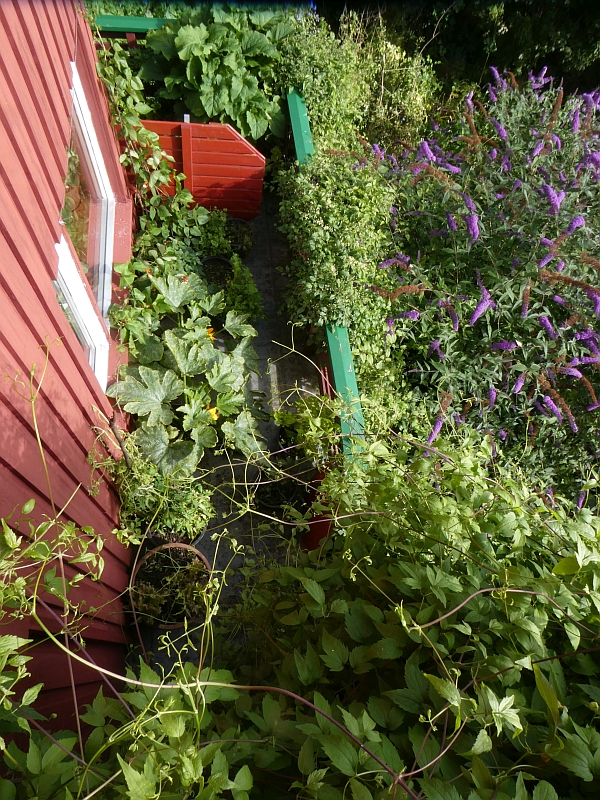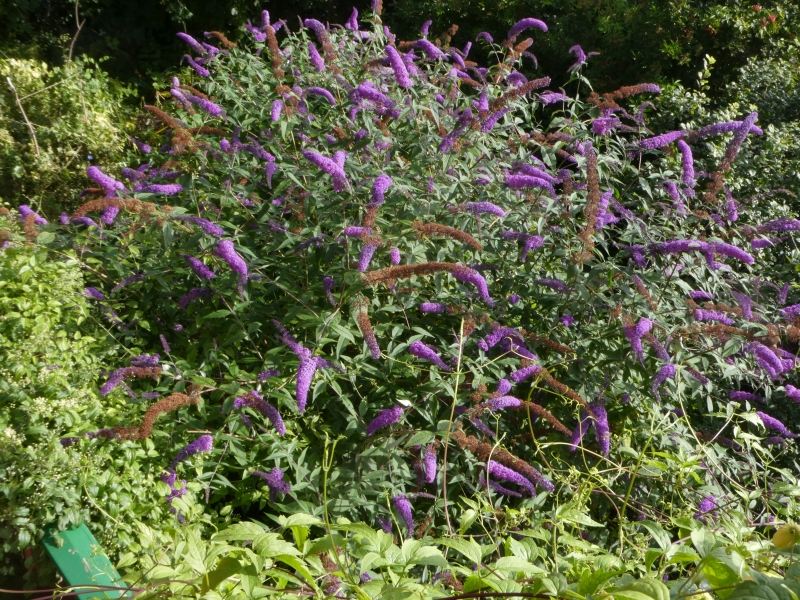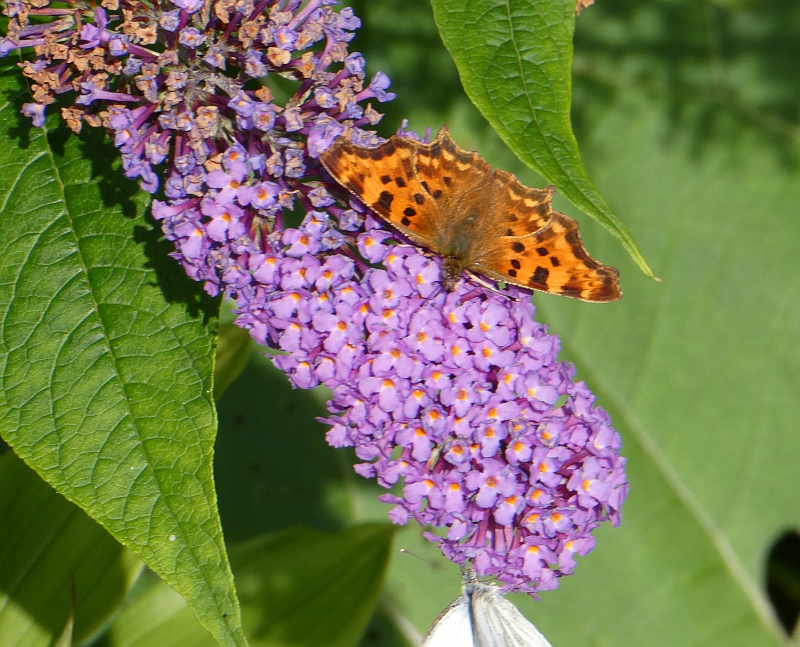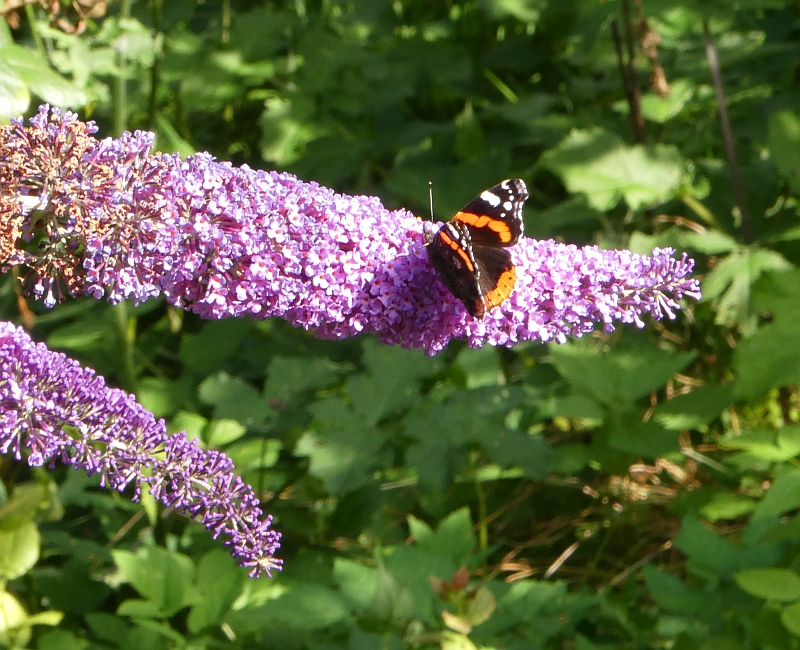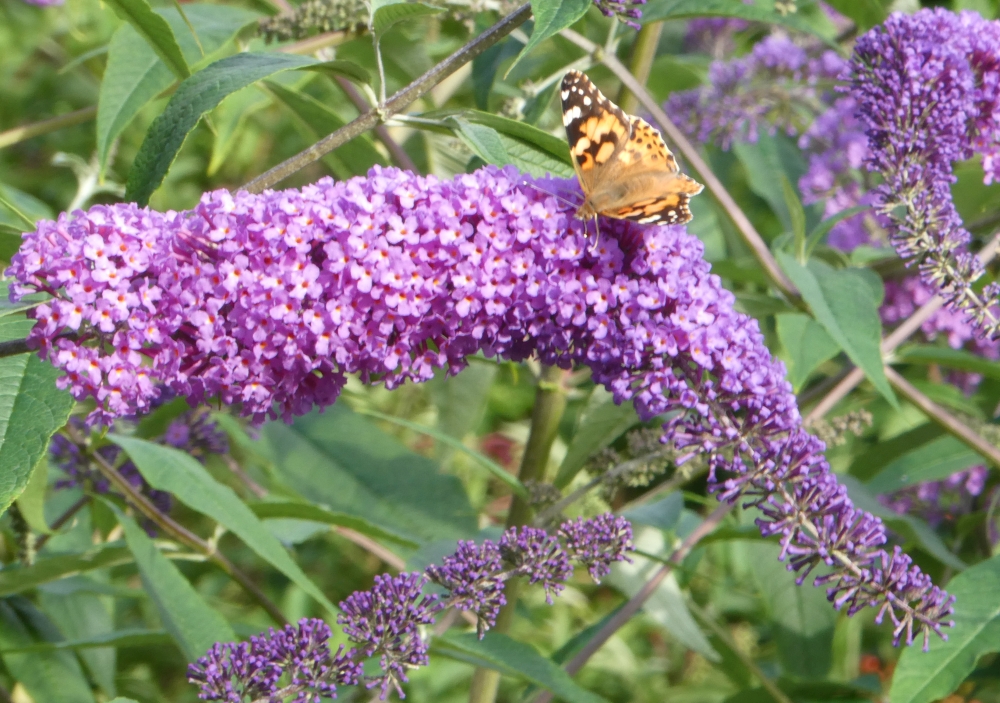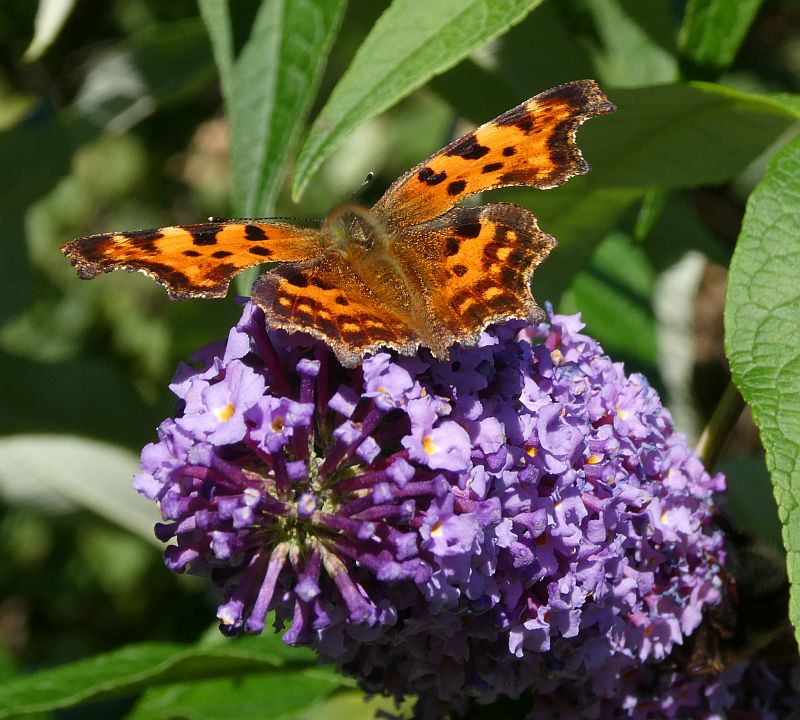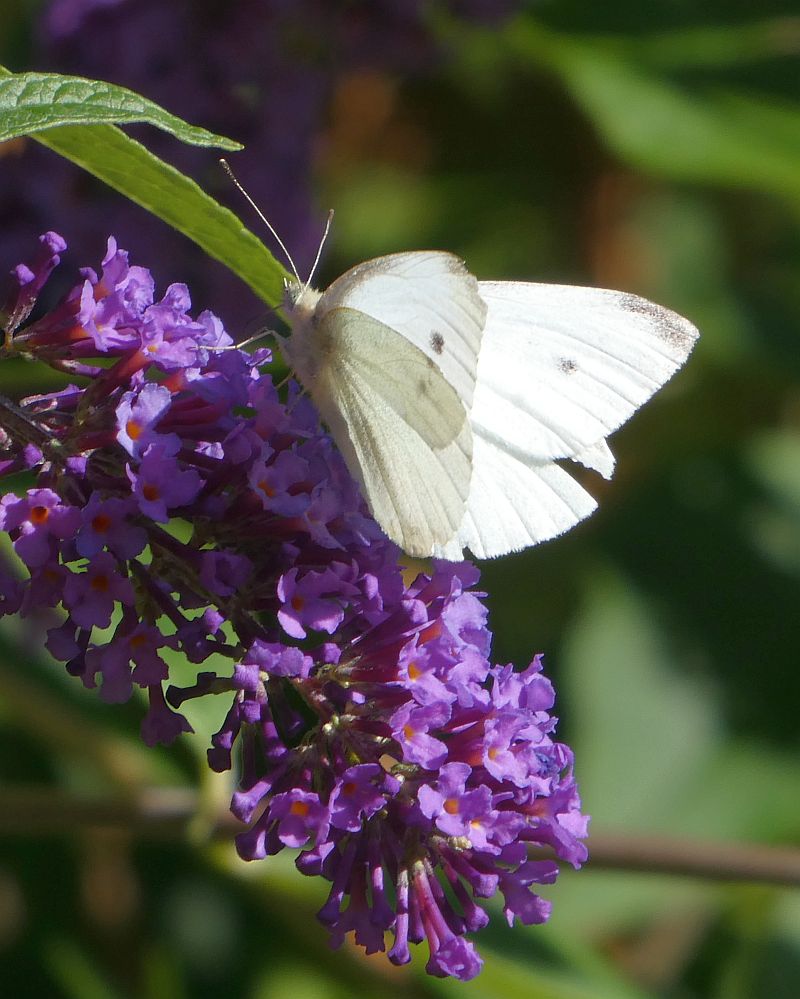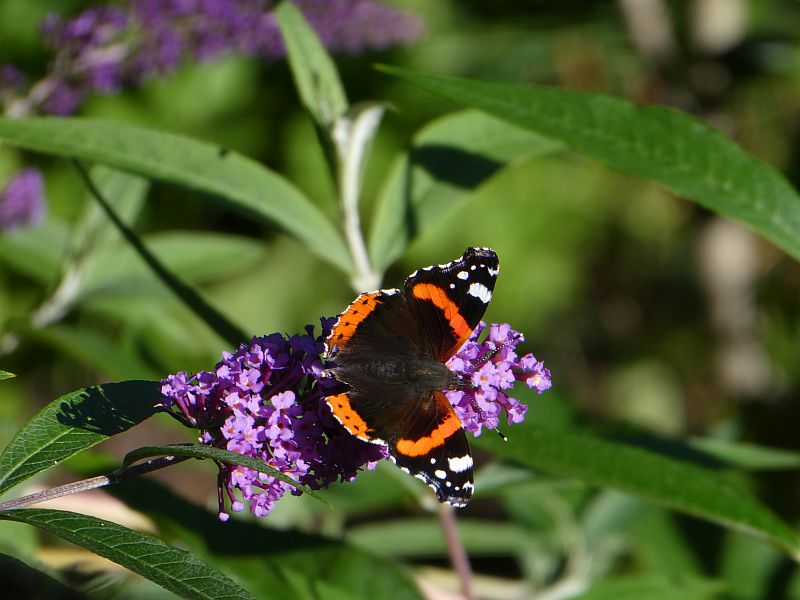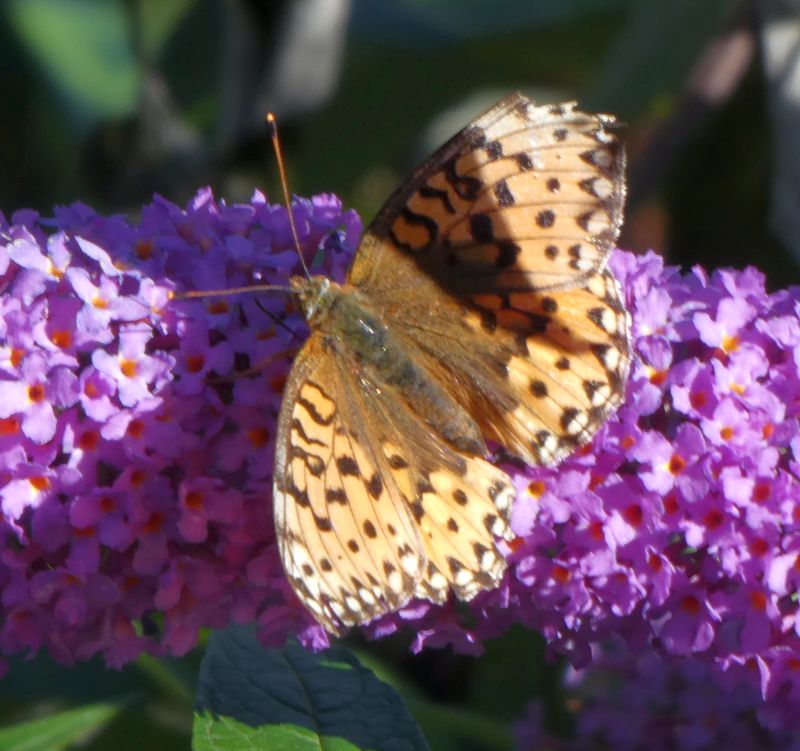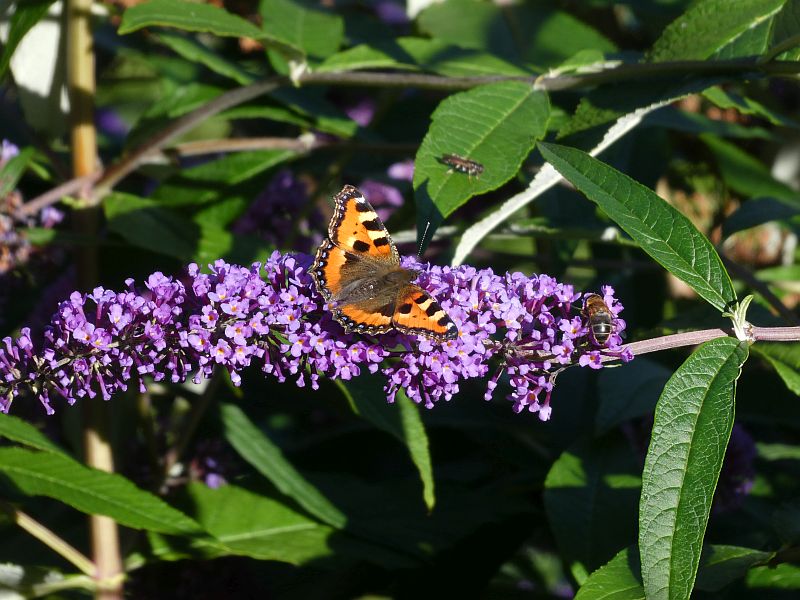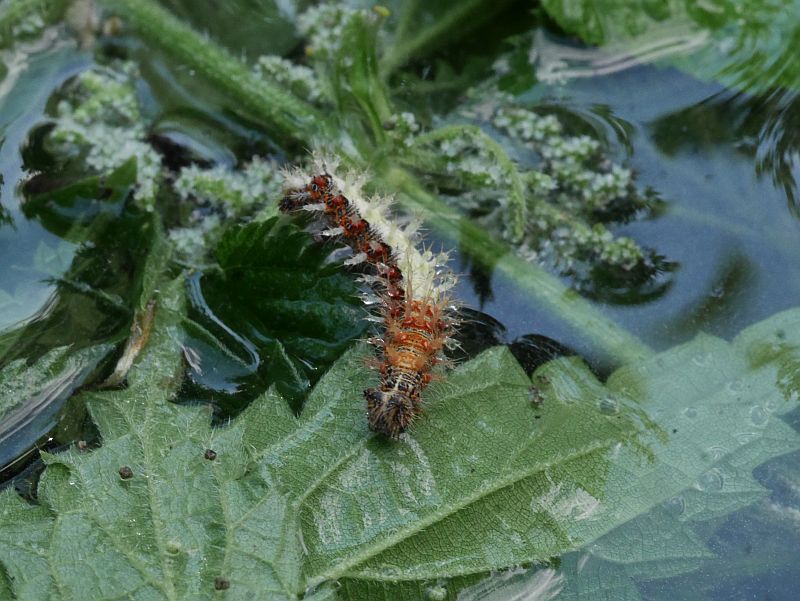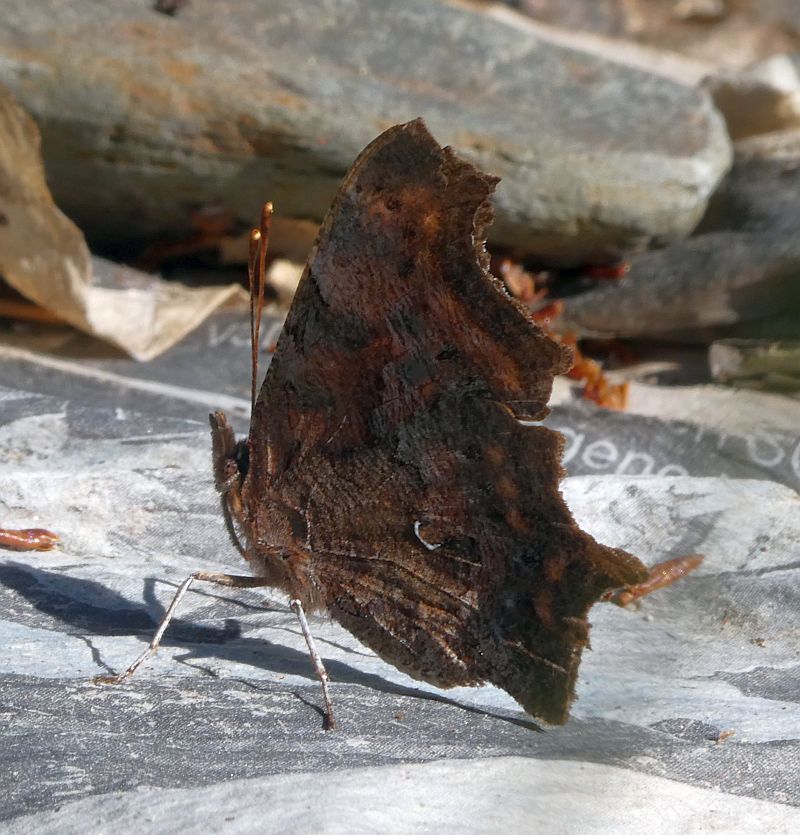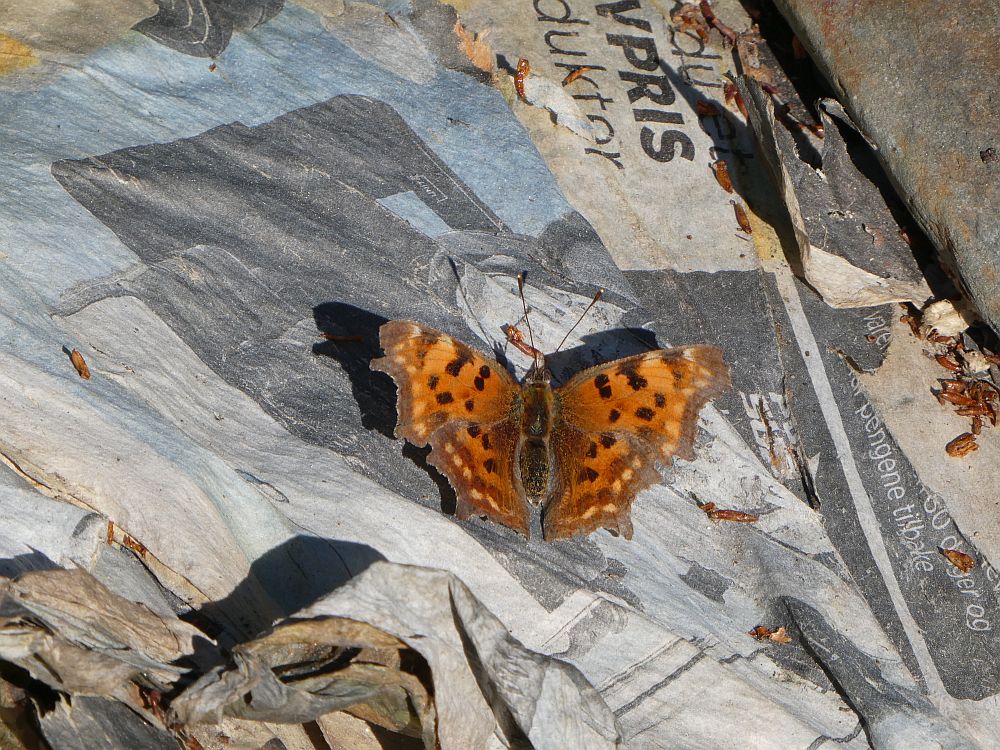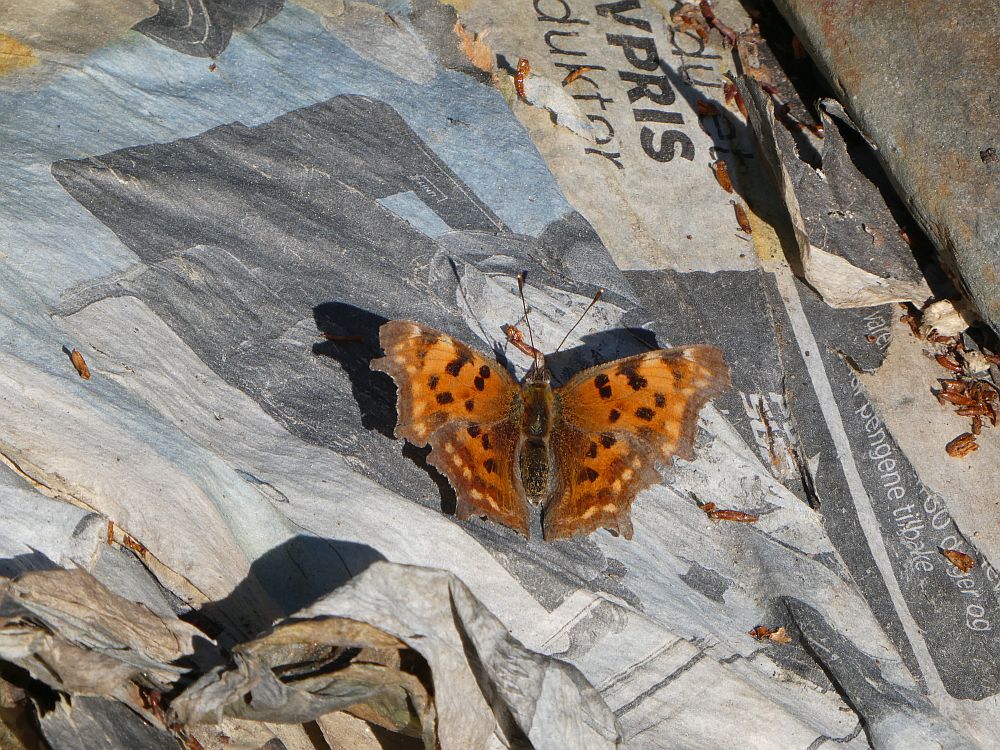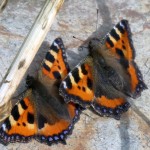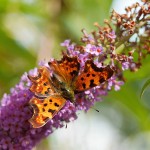We may know that some of are most spectacular butterflies like red admiral (admiral), painted lady (tistelsommerfugl), comma (hvit C), small tortoiseshell (neslesommerfugl) and peacock (dagpåfugløye) may lay their eggs on nettles (Urtica), but did you know that just here in Norway there are 51 species of moths that do the same and two of the most beautiful were in the garden this morning:
1. The burnished brass / mindre båndmetallfly (Diachrysia stenochrysis)
2. The small magpie / nesleengmott (Anania hortulata)
So, please keep a patch of nettles in the garden all summer (you can still eat the young shoots)…there are also several birds such as bullfinches (dompap) and finches such as brambling (bjørkefink) that eat the seed in winter!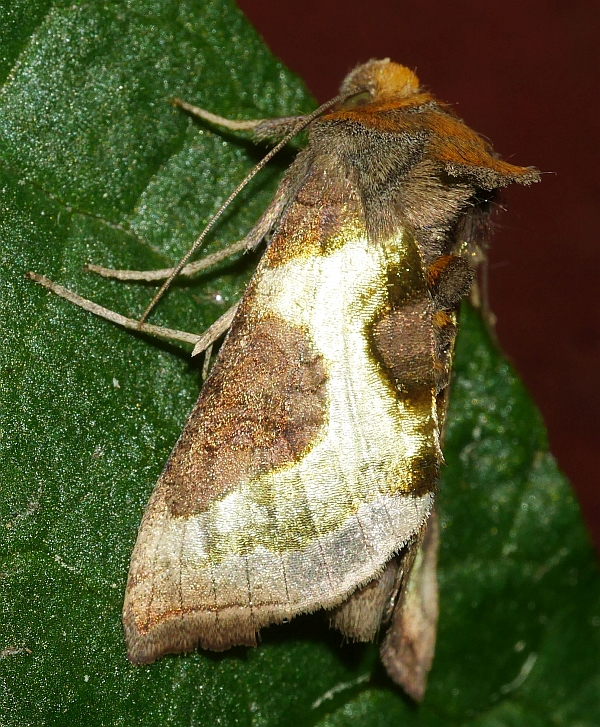

Tag Archives: Hvit C
Buddleja davidii
One of the few plants in my garden which isn’t edible is my large Buddleja davidii (butterfly bush / sommerfuglbusk), a wonderful entomental (loved by insects and an ornamental appreciated by Homo sapiens too!). It is strategically placed beneath the balcony so that I can look down from above. As chance has it, I had also planted old man’s beard / tysk klematis (Clematis vitalba) to climb up onto the balcony. The latter is equally popular with late summer pollinators, mainly hoverflies. So this is one of the best spots for watching and photographing the local insect life. However, after coming into flower 2-3 weeks ago there were no butterflies, but a rare 20C day brought them out and both painted lady (tistelsommerfugl; the first since the bumper year two years ago and only the second recorded this summer in Trøndelag county), red admiral (admiral) and comma / hvit C were out yesterday! But it’s at night that the butterfly bush is covered with pollinators, notably an estimated 200 large yellow underwing moths (hagebåndfly)
Buddleja Butterflies
By chance, the best two plants in the garden for pollinating insects in late summer are growing together in the garden. The Clematis vitalba (old man’s beard / tysk klematis) is in the foreground in the picture below and is popular with hoverflies, droneflies and bumblebees. Behind is my largest (of 3 Buddlejas, butterfly bush /sommerfuglbusk). We had one when we were growing up in the back garden, where my interest in insects and nature started. As the name suggests, it is most popular with butterflies (and moths), but bumble bees are also commonly seen on it. The Clematis reaches up to the balcony which allows me to study the insects at close hand. Clematis vitalba was planted in the garden as the cooked young shoots are commonly eaten in spring in Italy and is therefore one of the best edientomentals (edible/for the insects/ornamental) you can plant. Buddleja davidii is not edible and is in the entomental category.
Although the total number of butterflies is lower this year as last year we experienced a major invasion of painted lady (tistelsommerfugl) butterflies (only 2 observations in the last month in this part of Norway), there is a good diversity of species and you’ll find pictures and videos of the following species below:
Red admiral / admiral (up to 4)
Small tortoiseshell / neslesommerfugl (7)
Dark green fritillary / aglajaperlemorvinge (1)
Brimstone / sitronsommerfugl (colonising this area and my 3rd record this summer)
Comma / hvit C
Small white? / liten kålsommerfugl
Green-veined whites / rapssommerfugl have also been very common this year.
A possible small blue (dvergblåvinge) was also seen in the garden on Allium wallichii on 21st August.
Check your nettles!
I moved the larva back onto a nettle plant…
Comma checking punctuation?
A comma butterfly (hvit C) has been hanging out in the garden the last few days and its favourite perch is an area covered with newspapers. Is it checking the punctuation?
Comma butterfly in the garden

On burdock / borre (Arctium spp):


